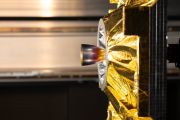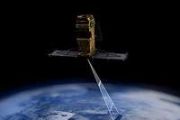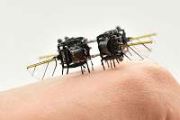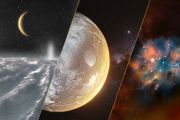
Copernical Team
Maritime Launch plans inaugural flight for 2023
 Maritime Launch Services Inc. (NEO: MAXQ) (MLSI) and Reaction Dynamics (RDX) are pleased to announce that they have signed a letter of intent to conduct launches from Spaceport Nova Scotia, expected to begin in 2023. These launches will provide the country sovereign launch capabilities and add Canada to the short list of "Launching States."
This partnership will advance the continuing plan
Maritime Launch Services Inc. (NEO: MAXQ) (MLSI) and Reaction Dynamics (RDX) are pleased to announce that they have signed a letter of intent to conduct launches from Spaceport Nova Scotia, expected to begin in 2023. These launches will provide the country sovereign launch capabilities and add Canada to the short list of "Launching States."
This partnership will advance the continuing plan NIC4 awarded satcomm service provider registry prototype contract for US Space Force
 NIC4, a subsidiary of Network Innovations, has been awarded a Service Provider Registry (SPR) prototype, a component of the Satellite Communications (SATCOM) Enterprise Management and Control (EM&C).
This software development effort is for the U.S. Space Force (USSF), Space Systems Command (SSC) through the Space Enterprise Consortium (SpEC) as an Other Transactional Authority (OTA) Agreem
NIC4, a subsidiary of Network Innovations, has been awarded a Service Provider Registry (SPR) prototype, a component of the Satellite Communications (SATCOM) Enterprise Management and Control (EM&C).
This software development effort is for the U.S. Space Force (USSF), Space Systems Command (SSC) through the Space Enterprise Consortium (SpEC) as an Other Transactional Authority (OTA) Agreem Satellogic announces multiple launch agreement with SpaceX
 Satellogic Inc. (NASDAQ: SATL), a leader in sub-meter resolution Earth Observation ("EO") data collection, reports it has signed a new Multiple Launch Agreement ("MLA") with SpaceX reserving launch capacity for its next 68 satellites. This new MLA follows the current MLA covering 2022 launches, and confirms that SpaceX continues to be Satellogic's preferred vendor for rideshare missions, meeting
Satellogic Inc. (NASDAQ: SATL), a leader in sub-meter resolution Earth Observation ("EO") data collection, reports it has signed a new Multiple Launch Agreement ("MLA") with SpaceX reserving launch capacity for its next 68 satellites. This new MLA follows the current MLA covering 2022 launches, and confirms that SpaceX continues to be Satellogic's preferred vendor for rideshare missions, meeting MDA completes first commercial sale of Canadarm3 technology to Axiom space
 MDA Ltd. (TSX:MDA), a leading provider of advanced technology and services to the rapidly expanding global space industry, has announced the first commercial sale of its Canadarm3 technology to Axiom Space.
The contract is for the delivery of 32 external robotic interfaces for Axiom Space's Axiom Station which is now under construction and on schedule to be the world's first commercial spa
MDA Ltd. (TSX:MDA), a leading provider of advanced technology and services to the rapidly expanding global space industry, has announced the first commercial sale of its Canadarm3 technology to Axiom Space.
The contract is for the delivery of 32 external robotic interfaces for Axiom Space's Axiom Station which is now under construction and on schedule to be the world's first commercial spa Physicists develop ideal testing conditions of solar cells for space applications
 Researchers at the University of Oklahoma, with the National Renewable Energy Laboratory, the University of North Texas, the NASA Glenn Research Center and several collaborators within the space power community, have recently published a paper in the journal Joule that describes the optimal conditions for testing perovskite solar cells for space.
Perovskites are a material used in a type o
Researchers at the University of Oklahoma, with the National Renewable Energy Laboratory, the University of North Texas, the NASA Glenn Research Center and several collaborators within the space power community, have recently published a paper in the journal Joule that describes the optimal conditions for testing perovskite solar cells for space.
Perovskites are a material used in a type o Astroscale's ELSA-d completes complex rendezvous operation
 Astroscale Holdings Inc. ("Astroscale"), the market leader in satellite servicing and long-term orbital sustainability across all orbits, has announced that, despite several unexpected setbacks, its End-of-Life Services by Astroscale-demonstration (ELSA-d) mission successfully completed further controlled close-approach rendezvous operations between its two spacecraft in orbit.
The technol
Astroscale Holdings Inc. ("Astroscale"), the market leader in satellite servicing and long-term orbital sustainability across all orbits, has announced that, despite several unexpected setbacks, its End-of-Life Services by Astroscale-demonstration (ELSA-d) mission successfully completed further controlled close-approach rendezvous operations between its two spacecraft in orbit.
The technol Tracking agricultural-related deforestation
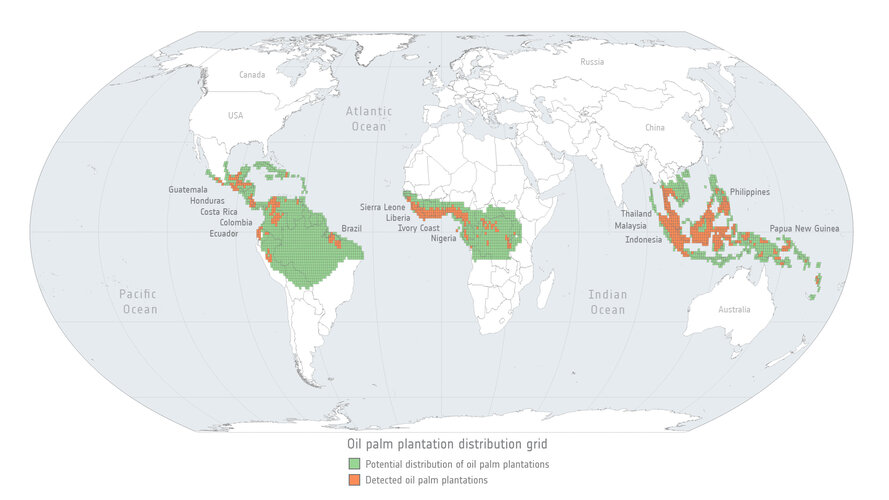
The global trade in agricultural commodities provides food, fuel and fibre to consumers around the world. Commodity production, however, is also linked with negative environmental impacts, including the loss and degradation of forested land.
Approximately 90% of global deforestation is driven by agricultural expansion – a phenomenon which has roots in the global demand for products such as palm oil, soy and beef. New research reveals how satellites can be used to map and monitor forest-cover changes and help implement effective zero deforestation commitments.
Sun releases moderate solar flare

The Sun emitted a moderate solar flare on May 4, 2022, peaking at 5:00 a.m. ET. NASA's Solar Dynamics Observatory, which watches the Sun constantly, captured an image of the event.
The Laser Interferometer Space Antenna reaches a crucial milestone

LISA, the Laser Interferometer Space Antenna, has reached an important milestone: it has passed the comprehensive "Mission Formulation Review" (MFR) and now enters the next phase of development. The review team, consisting of experts from ESA, NASA, the scientific community and industry, identified no showstoppers and confirmed that LISA has successfully reached a maturity sufficient to proceed to the next stage of development.
The MFR confirms the feasibility of the LISA mission and identifies a clear path of technology developments needed to reach the next major milestone: the mission adoption. The MFR is a checkpoint to ensure that the technology and planning for LISA is sufficiently mature; this is a prerequisite for mission development to continue. In an ESA mission lifetime cycle, the MFR is the formal end of Phase A (mission feasibility). LISA now enters Phase B1, which is focused on the preliminary definition of the mission.
"LISA is well underway. We are now entering phase B1, during which we do more detailed design work to establish the complete set of mission requirements and the verifications approach," says Prof. Karsten Danzmann, lead of the LISA Consortium.
Meet the IT team | Space jobs
 Video:
00:05:50
Video:
00:05:50
Meet the IT Team, see behind the scenes and find out how it is to work for the IT Department at the European Space Agency.













